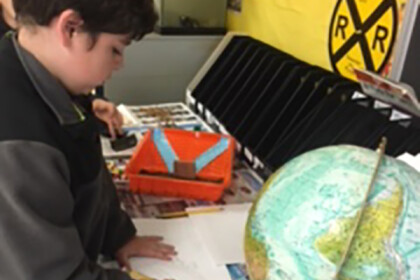
Projects & Materials

STEM Unit: Earth’s Systems and Engineering

This Grade 3 Science unit was developed this summer as part of the Summer Science Institute hosted by the Cape Cod Regional STEM Network and Cape Cod Community College. At the Institute, teachers spent two days learning about the 2016 Massachusetts Science and Technology/Engineering Standards then two more days creating instructional units, from essential questions to learning plans.
The unit we are sharing here was created by Debbie Fratus and Lynn Kraus from Dennis-Yarmouth Public Schools and Kimberlee Piknick from Monomoy Public Schools. It identifies important connections among weather, climate, and human activity, which can help students understand why these all matter.
We’re impressed by the way this unit gets students working at the intersection of science and engineering, as well as the way it supports the standards. It is also strong on making connections to language arts and design, which can help students engage in a lesson from multiple angles. We have invited the teachers to introduce the unit in their own words here:
When we reviewed the 2016 Massachusetts Science and Technology/Engineering Standards take on “weather,” we noticed a major shift. Instead of the narrower focus on earth and space science, the standards now emphasized earth systems and human activity. We realized this would be a much more rigorous unit than we had before, and decided that we had some learning to do.
We delved into materials on the ways weather, climate, and human activity are interrelated. This was not about “climate change” necessarily, but about how weather and climate influence people. You cannot escape weather: climate affects the lives of people all over the world. In fact, it turns out that climate inspires a great deal of the work engineers do. For instance, engineers design solutions to prevent or improve weather-related damage to homes and land.
In this way, we wanted to get our students to begin to think like engineers, even at such a young age. Doing so can help them begin to understand the world around them and see the ways people design things that help us live in the world. Maybe this will even encourage some of them to become engineers some day.
We are as excited about the students’ final products as we are about the lessons in this unit. Students start by researching a climate zone. Then they design a travel brochure to convince their teacher to travel there on vacation. This final product involves opinion writing and reading informational texts, which are both other elements of Grade 3 instruction. Next, we ask students to design a solution to protect their own city or town from water damage and erosion.
We see this as a work-in-progress, but we are excited to share it. We think it addresses the rigor in the standards. Working on it together on it helped prepare us for teaching big ideas and inspiring future scientists.